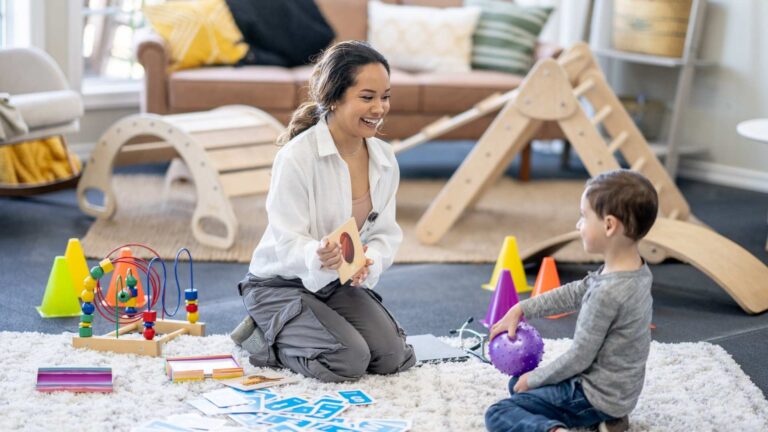Table of Contents
How do autism diagnosis tests work?
In the past, autism was often misunderstood, misdiagnosed, and sometimes even classified as a disease, leading to significant challenges for those affected and their families. This confusion stemmed from the overlapping symptoms of autism with other conditions, making it difficult for healthcare professionals to identify and diagnose the disorder accurately. However, as our understanding of autism has evolved, so too have the tools and methodologies used for its diagnosis. One of the most comprehensive and integrative tools developed for this purpose is the ADOS-2 test (Autism Diagnostic Observation Schedule, Second Edition).
The ADOS-2 test represents a significant advancement in the diagnostic process for autism. It offers a structured and standardized approach to observing and assessing the behaviors and social interactions of individuals suspected of having autism. By providing a more complete and detailed evaluation, the ADOS-2 test helps clinicians more precisely distinguish autism from other developmental disorders.
And if you are wondering, “How do autism diagnosis tests work?” keep reading this blog by ABA Centers of Connecticut as we delve into the autism diagnosis process and how the ADOS-2 tests it.
Navigating the Autism Diagnosis

The diagnosis of autism usually occurs when parents or pediatricians notice signs that raise the alarm during early childhood. Common symptoms or early signs include delayed speech and language skills, limited eye contact, and difficulties with social interactions. For example, a child may not respond to their name by 12 months or show interest in playing with other children. They might also exhibit repetitive behaviors, such as hand-flapping, rocking, or insistence on specific routines.
Professionals can identify ASD as early as 18 months, but they typically diagnose it around the ages of 2 to 3 years. Moreover, the American Academy of Pediatrics highlights the importance of developmental screenings at 9, 18, and 30 months of age to detect potential delays or disabilities.
But how do these screenings work? Various diagnostic tools, including the ADOS-2, DISCO, and ADI-R, play pivotal roles in identifying autism. The process typically involves:
- A comprehensive review of the child’s medical and developmental history
- Revising critical developmental milestones
- A clinical evaluation supplemented by standardized assessments
This multidisciplinary approach may include psychologists, psychiatrists, neurologists, and other specialists to garner a holistic understanding of the individual’s profile and needs.
Understanding the ADOS-2 Test
ADOS-2 test provides a standardized framework for professionals to assess social interaction, communication, play, and imaginative use of materials in individuals who may have ASD. Clinicians customize the test for different developmental stages and linguistic abilities, making it suitable for individuals of all ages and functioning levels.
This tool is widely used and recognized as one of the gold-standard tests for diagnosing ASD. The Journal of Autism and Developmental Disorders underscores its efficacy, with sensitivity rates ranging from 89% to 92% in correctly identifying autism and specificity rates ranging from 81% to 85% in accurately discerning non-autistic individuals.
Components of the ADOS-2
1. Module Selection: The first step in the ADOS-2 assessment is selecting the appropriate module based on the individual’s age and language level:
- Module 1: For children with little or no phrase speech.
- Module 2: For children with phrase speech but not yet fluent.
- Module 3: For verbally fluent children and young adolescents.
- Module 4: For verbally fluent older adolescents and adults.
2. Standardized Activities: Each module includes a series of structured and semi-structured tasks that allow the evaluator to observe behaviors directly related to ASD. These tasks are designed to elicit specific social and communicative behaviors and include activities like free play, conversation, and storytelling.
3. Behavioral Observations: During the assessment, the clinician observes and records specific behaviors, such as eye contact, facial expressions, gestures, and the ability to initiate and respond to social interactions. The clinician also notes repetitive behaviors and restricted interests.
4. Scoring and Interpretation: After the session, the clinician scores the observed behaviors using a standardized scoring system. Then, he interprets these scores to determine the presence and severity of ASD-related symptoms. The results from the ADOS-2 are combined with other information, such as developmental history and other clinical assessments, to provide a comprehensive diagnosis.
Next Steps after an Autism Diagnosis
Upon receiving an autism diagnosis, families begin a journey filled with a range of emotions and uncertainties. While the path ahead may seem daunting, it also brings opportunities for growth and empowerment. At Aba Centers of Connecticut, we understand the unique challenges that come with an autism diagnosis and are dedicated to providing support and resources every step of the way.
Here are some guiding principles to navigate this transformative journey:

- Seek reliable information and resources to understand autism and your child’s unique needs
- Connect with support groups, both locally and online, to share experiences and receive support from families who are going through the same autism journey
- Explore therapeutic interventions, such as Applied Behavior Analysis (ABA) therapy, tailored to your child’s needs and goals
- Collaborate with therapists to implement strategies at home that support your child’s progress and development
- Prioritize self-care, nurturing your physical and emotional well-being to support your child on their journey better
ABA Centers of Connecticut and Autism Testing
Suspecting that a loved one may have a neurodevelopmental condition can be deeply concerning. However, it is crucial to confirm or rule out such suspicions with an autism test that provides comprehensive information, alleviates doubts, and, most importantly, enables timely action to seek the best support for your child.
Early diagnosis and intervention are essential, as they can significantly enhance the effectiveness of therapies and support, helping children with autism achieve their full potential.
At ABA Centers of Connecticut, we offer a range of autism care services, from autism testing to fully personalized ABA therapy plans, available both at our centers and in the comfort of your home.
Navigate the journey of autism with the help of a top care autism provider. Call us at (844) 395-0448 or contact us through our website, and together, we will work towards a brighter future for your child on the spectrum.









